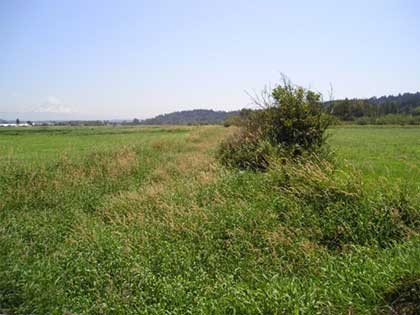Reed canarygrass
Reed canarygrass (RCG) is an aggressive, invasive species that crowds out native vegetation. RCG grows so thick that it limits flow in a waterway and causes sediment and organic matter to quickly accumulate on the bottom of the waterway.
RCG is one of the most common impacts to agricultural drainage. The Agricultural Drainage Assistance Program (ADAP) has developed a manual of best management practices (12.2 MB) (BMPs) for addressing these impacts.
You can remove RCG by hand, by machinery, or by herbicide. But no matter how reed canary grass is removed, it will grow back fast unless the channel is shaded to prevent its regrowth. Shading of the waterway or repeated removal are the only long term solutions to removing RCG. Over the long term, shading is a cheaper and/or an easier way to control RCG than repeated removal. Shading also provides other ecological and water quality benefits.

Waterway before reedcanary grass was removed

Channel that was previously choked with reedcanary grass after removal and about five years of shading.

 Translate
Translate